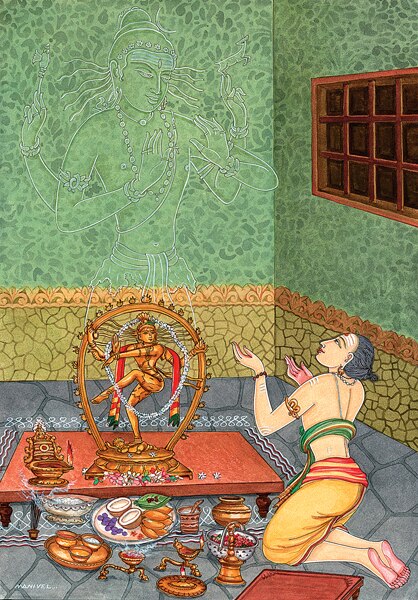Shaivism is one of the major Hindu traditions, which worships Shiva as the Supreme Being. One of the largest Hindu denominations, it incorporates many sub-traditions ranging from devotional dualistic theism such as Shaiva Siddhanta to yoga-orientated monistic non-theism such as Kashmiri Shaivism. It considers both the Vedas and the Agama texts as important sources of theology. According to a 2010 estimate by Johnson and Grim, Shaivism is the second-largest Hindu sect, constituting about 253 million or 26.6% of Hindus.
Shiva (above) is the primary deity of Shaivism.
The "Pashupati" seal from the Indus Valley civilisation.
Kushan coin of Vima Kadphises (2nd century CE), with a possible Shiva, holding a trident, in ithyphallic state and next to a bull, his mount, as in Shaivism. The deity was described by the later Kushans in their coinage as "Oesho", a possibly kushan deity.
Shiva (middle) is the supreme being of Shaivism, accompanied by his son Ganesha (left) and consort Parvati (right). Painting by Raja Ravi Varma.
Sanskrit is a classical language belonging to the Indo-Aryan branch of the Indo-European languages. It arose in South Asia after its predecessor languages had diffused there from the northwest in the late Bronze Age. Sanskrit is the sacred language of Hinduism, the language of classical Hindu philosophy, and of historical texts of Buddhism and Jainism. It was a link language in ancient and medieval South Asia, and upon transmission of Hindu and Buddhist culture to Southeast Asia, East Asia and Central Asia in the early medieval era, it became a language of religion and high culture, and of the political elites in some of these regions. As a result, Sanskrit had a lasting effect on the languages of South Asia, Southeast Asia and East Asia, especially in their formal and learned vocabularies.
Image: Bhagavad Gita 19th century Illustrated Sanskrit Chapter 1.20.21
Image: Sanskrit College 1999 stamp of India
Rigveda (padapatha) manuscript in Devanagari, early 19th century. The red horizontal and vertical lines mark low and high pitch changes for chanting.
A 17th-century birch bark manuscript of Pāṇini's grammar treatise from Kashmir








